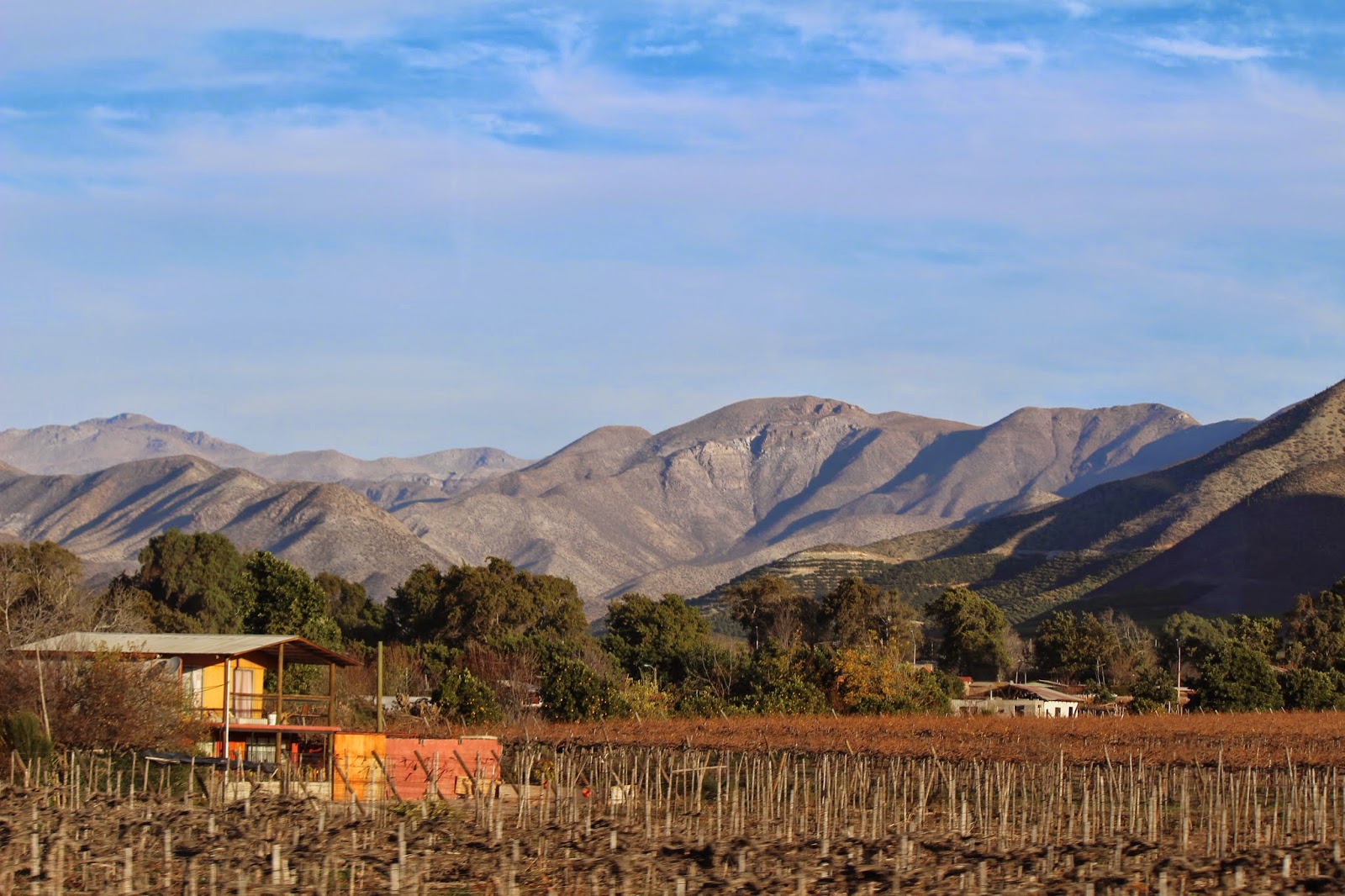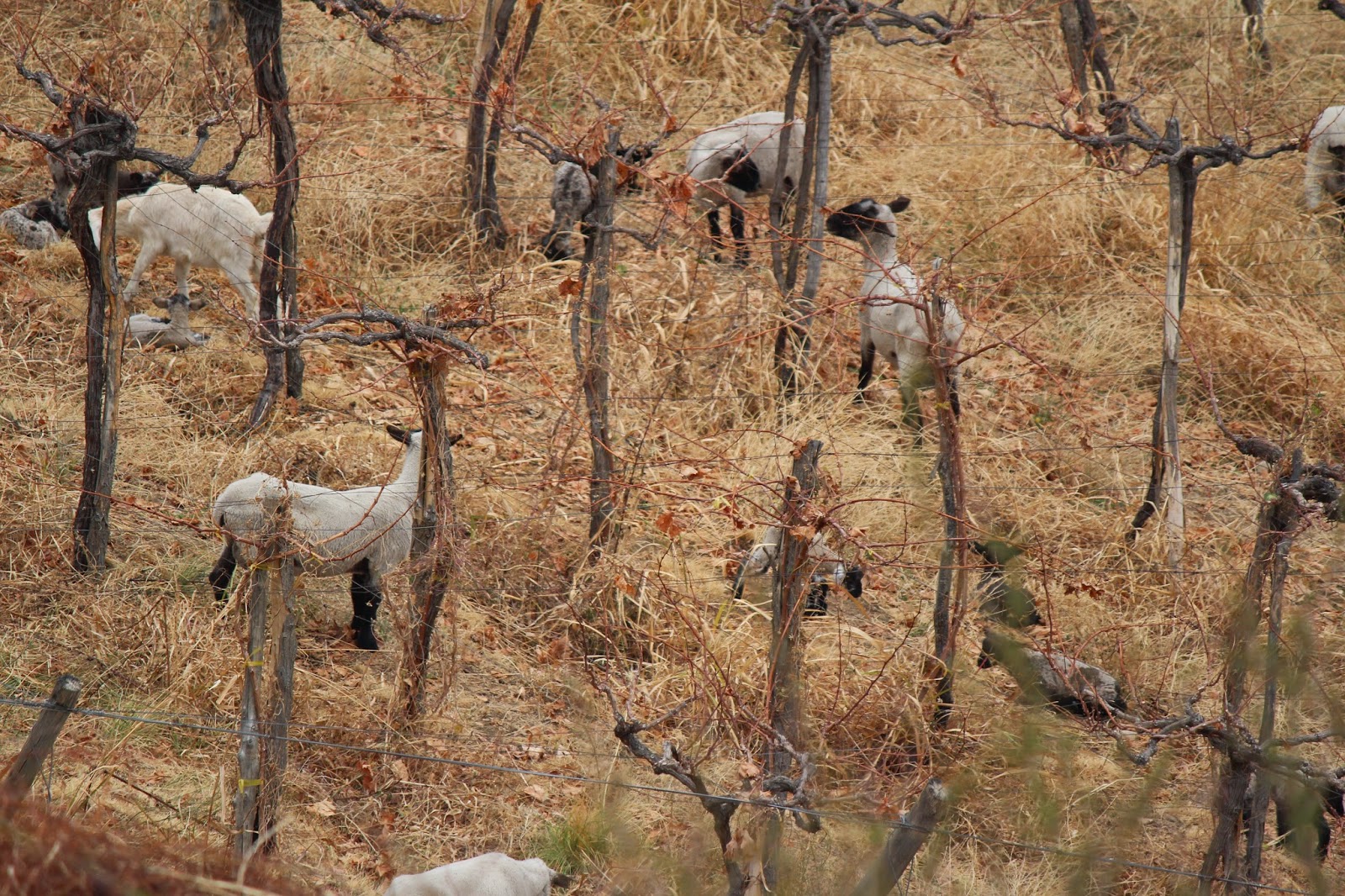A brief 50 minute flight to the south of Antofagasta lies La Serena. From there, you walk across the street (the side heading towards the mountains) and flag down the first bus that says Vicuna or Pisco Elqui. Expect to pay $1.500 CLP per person to Vicuna or $3.000 CLP per person to Pisco Elqui. The busses to Vicuna are more frequent and doing the trip in two legs doesn't cost you anything but a brief 5 minute layover in Vicuna.
If you are fortunate enough to land in the early evening hours you may enjoy the same sunset that we did: one that set the mountains ablaze.
Once in Pisco Elqui, I would highly recommend lodging in the Balcones de Pisco Elqui. Not only is it an economical option but the owner, Guillermo, is bilingual, friendly, and great at maintaining the facilities in immaculate condition. In order to avoid false advertising I should note here that the above building is not the recommended lodging, but one that you should stop by along the main drive.
Coming from the coastal desert of Antofagasta, going for a stroll through wine country on a brisk morning was a treat. The area sees year round tourism but the adventurers seeking a more isolated vacation should plan to visit between March and September. Although you will find the vines dormant, the view is no less spectacular.
Pisco Elqui is located in the heart of the Elqui valley and provides a great basecamp for walking (or renting cheap bicycles and cycling) along the valley.
Two things that you can never seem to forget about in chile: Carabineros and street dogs. This little fellow accompanied us all the way to Tres Nichos distillery.
After seeing poinsettias only once a year and eternally confined to small pots, finding them thriving in the high valley was a bit surprising.
Chile is the largest pisco producer (and consumer) in the world. All of these vineyards fuel either the pisco distilleries or the wineries along the valley.
Perhaps now you are starting to understand why this retreat was such a refreshing change from the sun-bleached coast of Antofagasta.
When they ran out of space on the valley floor, they started building up. The entire region is covered with terraced estates growing either grapes or olives.
Another thing that we were not accustomed to in Antofagasta: wildlife.
Sheep act to keep the bugs, weeds, and low grasses at bay while fertilizing the fields for the next season.
Plus they're cute
Originally the Tres Nichos distillery, the Fondos los Nichos offers a free tour and tastings several times throughout the day.
They have an extensive cellar for aging and cooling the piscos and wines that they sell.
Back on the Earth's surface, we found the rest of the distillery still utilizing an old International Harvester for daily use.
We were warned that it might snow that day but it wasn't until our walk back towards town that we gave the thought any consideration. As the clouds briefly parted we caught a glimpse of the snow covered mountains that flank the valley.
Graffiti art is something that, as you may recall from my earlier post from Valparaiso, is very common in Chile. The shop paid the artist to decorate her otherwise barren and colorless wall.
We found out later that the artist was fairly popular throughout Pisco Elqui.
Let the record state that it was this moment in time when I realized that the one thing missing in my life was a Unimog.
Inside the Igelesia Pisco Elqui
Along with grapes, locals produce a fair amount of pomegranates, avocados, oranges, and figs.
On our last day in town we decided to check out the "Mirador".
Little did we know that we missed the turn at the base of the hill and accidentally found ourselves on more of a trek.
A trek that led here.
Most of the snow melt is captured during the spring for irrigation purposes. You can see the difference between the natural landscape to the left and the lightly modified one to the right. The sandy soil is great for growing grapes because of its fast draining nature.
When we finally found our way back down to town we were greeted by a 4 horse salute.
This photo may be worth downloading just to see the degree of detail that went into making the beautiful tile-mosaic of Gabriela Mistral.
With time left before our bus, we followed the ridge down to Montegrande.
Very little wall space was left untouched.
One of the smaller estates in the region. When they outgrew their small acreage they bought the mountain and just started building up.
The options in town were limited so we (regretfully) chose a restaurant on the main square before catching the bus home.

































No comments:
Post a Comment